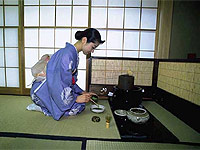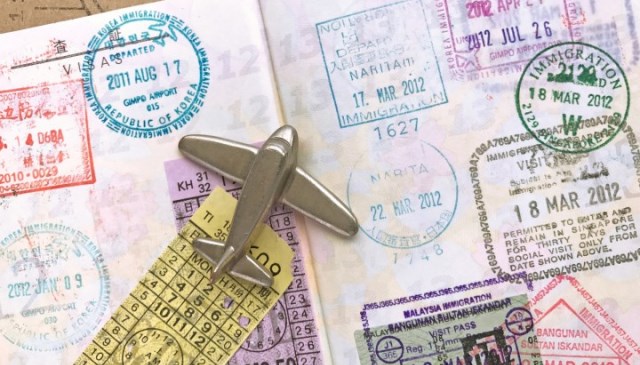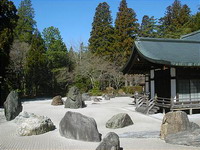Tea ceremony (part 1)
 Among the unique arts, which in our understanding are inextricably linked with Japan, is the art of the tea ceremony, which means literally “tea with hot water” (cha – tea, yu – hot water). The Japanese tea ceremony is not just a tradition, it is a sacrament that cannot but attract attention and arouse respect.
Among the unique arts, which in our understanding are inextricably linked with Japan, is the art of the tea ceremony, which means literally “tea with hot water” (cha – tea, yu – hot water). The Japanese tea ceremony is not just a tradition, it is a sacrament that cannot but attract attention and arouse respect.
The art of the tea ceremony has been studied for years in special schools. Despite the fact that the process itself may seem simple and natural, there is no limit to perfection in this. The Japanese girl’s ability to meet guests, place them on mats according to the Japanese tradition, make fragrant tea, and then pour them into cups with a bow to serve it is the highest sign of aesthetic education.
Cha-no-yu is one of the ways of understanding the psychology and worldview of the Japanese. Its true meaning lies not so much in tasting tea brewed according to all the rules, but in gaining a certain state of mind, detaching oneself from the bustle of everyday life and comprehending Zen. The tea ceremony helps to establish an atmosphere of unity, co-thinking between all its participants, implying a renunciation of their own “I”.
The tea ceremony, like in a mirror, reflects the essence of the culture of Japan, its uniqueness and uniqueness. It finds its manifestation in the rare industriousness of the Japanese, their innate politeness and unusual sense of beauty, modesty, simplicity, laconicism and, at the same time, extraordinary grace of decoration, clothes and interior. The tea ceremony is also a vivid example of the amazing ability of the Japanese to borrow and develop the achievements of other peoples and cultures, while preserving their national identity.
HISTORY OF TEA CEREMONY
Tea ceremony The history of the tea ceremony dates back to the 8th century. According to one version, tea was first brought to Japan from China in 805. In China, it was appreciated as a medicinal plant that relieves fatigue and helps with many diseases, and was even used in meditation. One of the ancient Taoist treatises says that “if you drink tea constantly, you can find wings and learn to fly.”
After the termination of official relations with China in 894, interest in tea declined sharply, and only in 1191 did it reappear in Japan.
In the XIII century, after the spread of Zen teachings in Japan, tea drinking grew into a kind of ritual, which soon became an integral part of life in Buddhist monasteries. In the 15th century, thanks to the Zen Buddhist monk Shuko, the foundations of “t-no-yu” were formed. It was he who brought the atmosphere of simplicity and disagreement into the tea ceremony, reflecting the basic principles of Zen aesthetics. According to Syuko, the beautiful should not be manifested in full force, for its implementation, hiding is necessary. The essence of the ceremony was laid-back sincerity and natural naturalness of things. The concept of “wabity” created by Syuko was based on four principles:
naturalness and calm
a few and simple decoration,
utensils according to the age of the guest,
equanimity and serenity.
According to Syuko, these principles helped to achieve unanimity between the host and the guest and focus on one thing, allowing them to understand each other not with words, but with the help of the heart.
The Tea Ceremony The art of tea drinking reached its peak in the 16th century thanks to Sen-no Rikyu, who was able to summarize the ideas of his predecessors and bring them to their logical conclusion. He opposed any manifestation of luxury, considering the art of tea drinking one of the many ways to serve the Buddha’s Way. Under him, the tea ceremony took place in an atmosphere of rude simplicity, contributing to the achievement of a certain mental attitude in accordance with the principles of Zen – rigor and asceticism.
After Japan opened its borders to the Western world, the tea ceremony gradually began to lose popularity, which forced many masters to make certain concessions and simplify it, making changes in accordance with the spirit of the times: tables and chairs could now be present in the ceremony.
At the end of the 70s of the XIX century, ta-yu again entered its heyday: tea ceremonies were held in many large temples, and in 1887, a gala tea ceremony was held in honor of Emperor Maidi in the Imperial Palace in Kyoto.
In modern times, the tea ceremony is becoming more democratic. If earlier only men could take part in it, now now more and more women appear among the masters.
In the course of history, the tea ceremony had a huge impact on the behavior and life of the Japanese and gave rise to other arts, for example, the art of ikebana. Today, both Japanese men and women study every movement of the tea ceremony.



